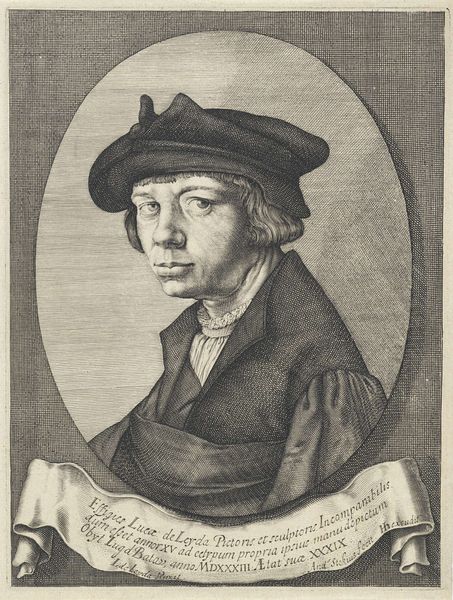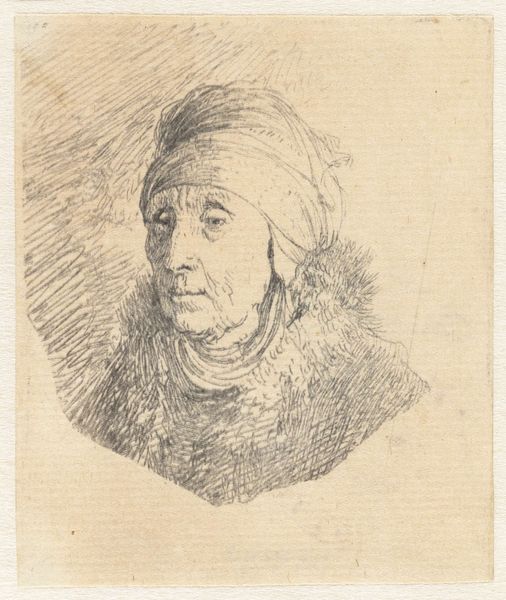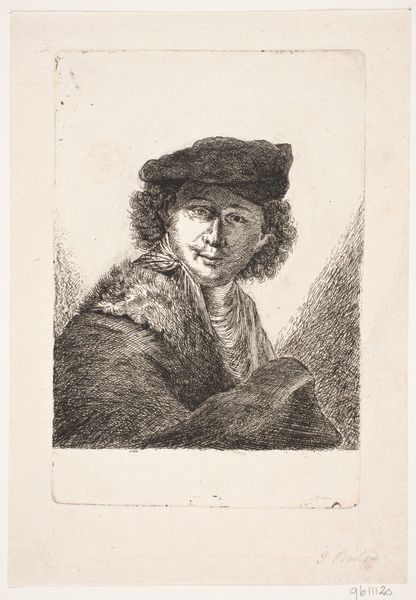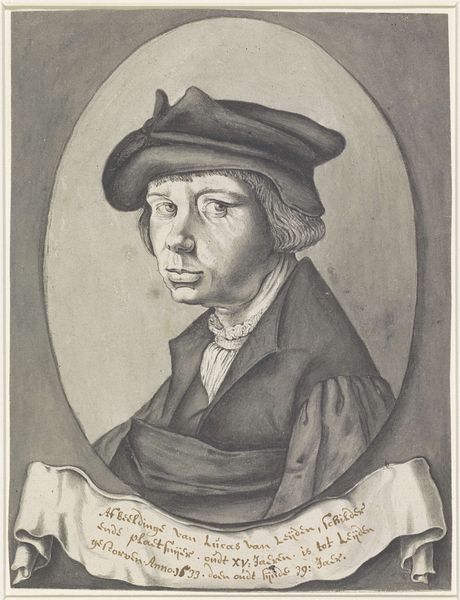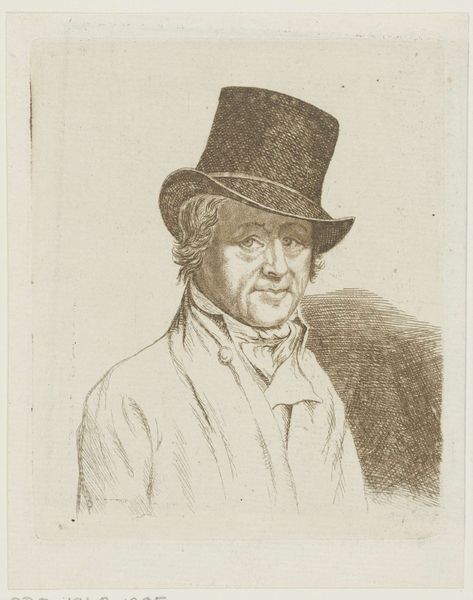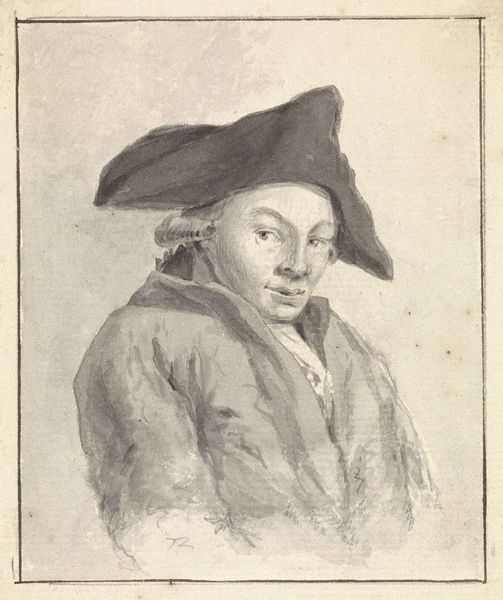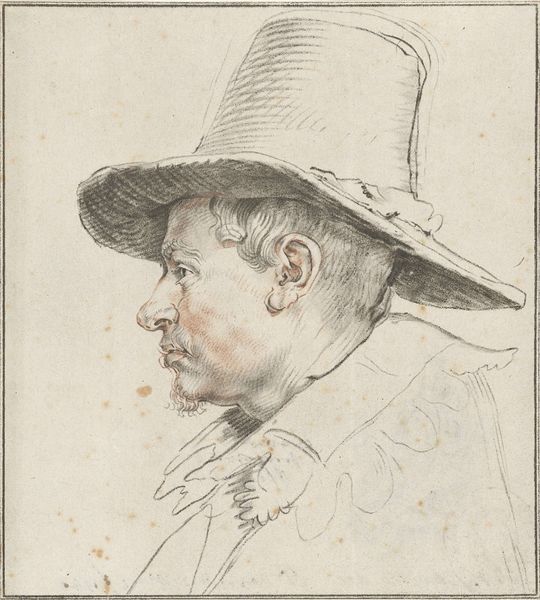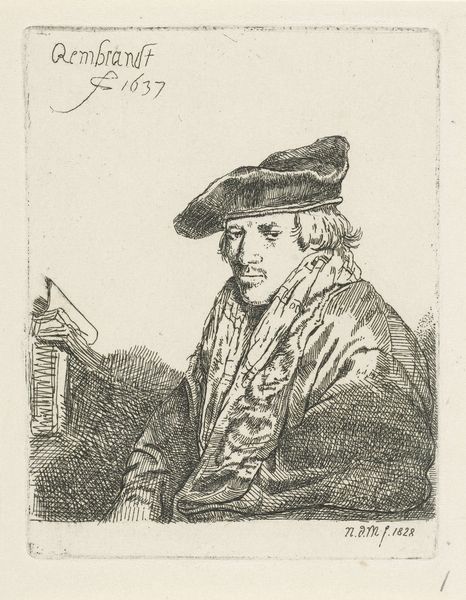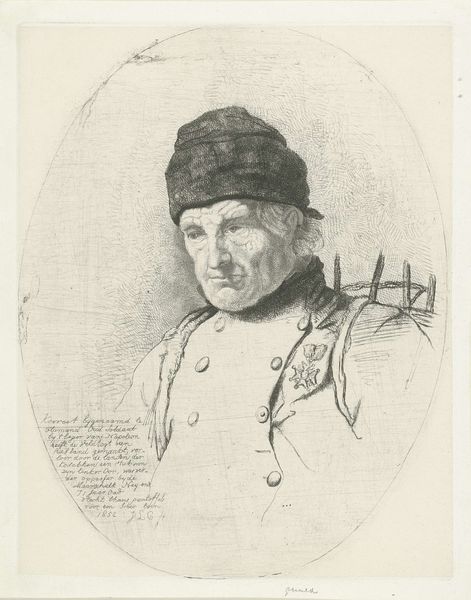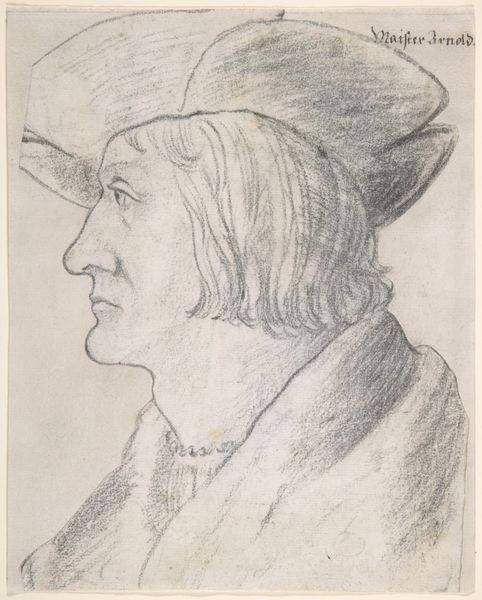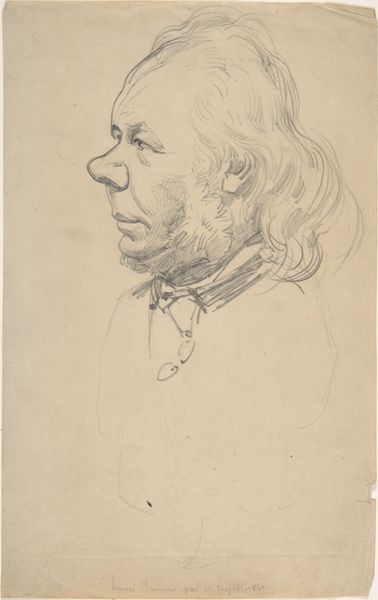
drawing, pencil
#
portrait
#
pencil drawn
#
drawing
#
figuration
#
form
#
pencil drawing
#
pencil
#
portrait drawing
Dimensions: height 255 mm, width 200 mm
Copyright: Rijks Museum: Open Domain
Editor: This is "Portret van Lucas van Leyden, in ovaal naar links," a portrait drawing, probably with pencil, created sometime between 1582 and 1698. I’m really drawn to the intricate details achieved with such a simple medium. How do you see this work functioning within its historical context? Curator: It's crucial to examine the social context surrounding this portrait’s production. This work speaks volumes about the material conditions of artistic creation and consumption. Note the probable use of pencil – what was its accessibility at the time, and how did it influence the creation of art for both elite and perhaps broader audiences? Editor: So, it’s less about the sitter, Lucas van Leyden, and more about how this object came to exist in the world? Curator: Precisely. Who commissioned this piece, and why employ a relatively accessible medium like pencil for a portrait? The material itself challenges traditional hierarchies of artistic practice. Does the ‘simplicity’ of the medium diminish its artistic value in the eyes of its intended audience, or does it amplify its message, rendering art as a product available across societal lines? Think about the labour involved - both the artist's and perhaps the preparator of the drawing surface. Editor: That really shifts my focus. I was initially thinking about the artist’s skill, but now I see it as part of a broader system of production and consumption. Curator: Exactly. Considering this as an object circulating in a specific market encourages a reading beyond simple aesthetic appreciation. The materiality and the making reveal so much more than just the surface image. We’re really interrogating the mechanisms behind its creation and meaning. Editor: I see what you mean. Thinking about the pencil itself as a material and the processes involved in the artmaking gives a new appreciation for the artwork and the economic circumstances in which it was made. Thanks for sharing that perspective. Curator: Indeed. By focusing on materials and means, we illuminate hidden social and economic dimensions often overlooked in art history.
Comments
No comments
Be the first to comment and join the conversation on the ultimate creative platform.
